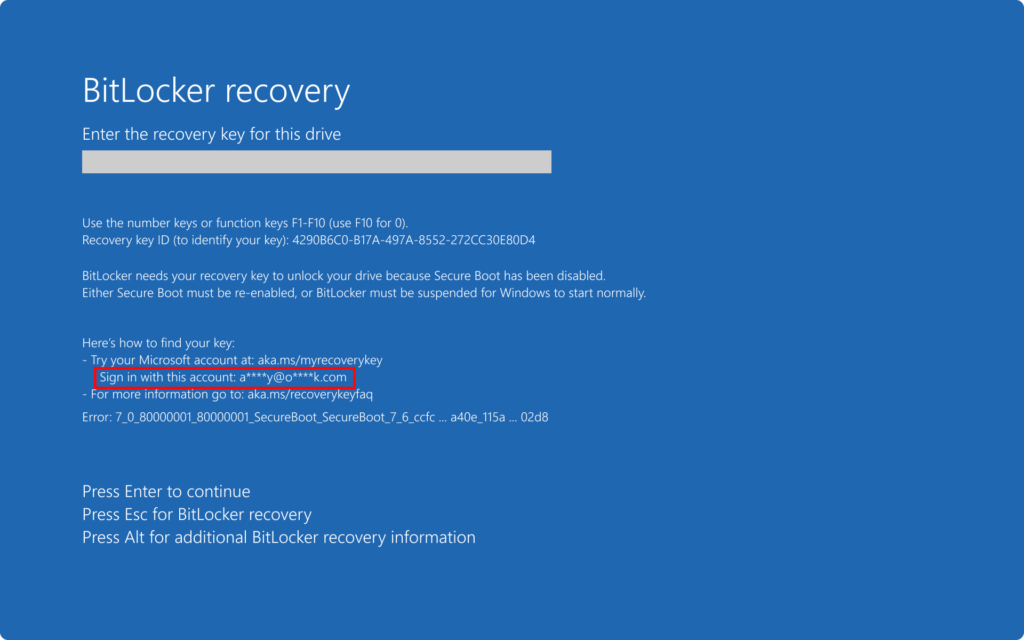- BitLocker may fail to activate due to TPM or system configuration issues.
- Updating the BIOS and checking the boot settings can help prevent constant requests for a recovery key.
- Encryption errors can be resolved by ensuring sufficient space on the system partition and a GPT partition scheme.
- To recover files from an encrypted drive, find the recovery key from Microsoft or use specialized tools.

BitLocker is an encryption tool built into Windows that protects data on hard drives and external drives. Although it's useful for improving security, it's not without its problems. In this article, we'll analyze the most common ones. BitLocker errors in Windows, their causes and the most effective solutions for each case.
From startup issues to errors when trying to activate BitLocker, this article will provide you with Detailed information and step-by-step guides to resolve any issues that may arise with this encryption tool. In addition, it is essential to know how Properly manage drives in Windows to avoid conflicts that could affect BitLocker.
BitLocker errors in Windows during activation

One of the most common problems with BitLocker is the inability to activate it. This can occur for a variety of reasons, including incorrect system configurations, disabled TPM chip, or file system problems from the album.
Solution: To verify system compatibility and configuration before enabling BitLocker, you can try the following:
- Open the Device Manager and check if the TPM is active.
- If your computer doesn't have a TPM chip, you can turn on BitLocker without it by setting up a USB drive como clave.
- Make sure that the file system It is NTFS, since BitLocker does not work with FAT32.
BitLocker constantly requests the recovery key

Some users report that BitLocker requests the recovery key on every reboot, which can be frustrating. This often occurs after firmware updates or changes to hardware settings.
Solution: To prevent BitLocker from prompting for the recovery key on every reboot, follow these steps:
- First disable and re-enable BitLocker in the affected unit.
- Then run the command
manage-bde -protectors -disable C:and thenmanage-bde -protectors -enable C:. - Finally, check the BIOS that the TPM is active and that the Safe Start está habilitado.
Error 0x8031004A: BitLocker could not be activated

This error indicates that BitLocker cannot encrypt the drive because problems with the TPM or partition configurationTo resolve this error, it's recommended that you check both your BIOS settings and the status of your hard drive.
Solution: Try these methods to solve this problem:
- Make sure the system partition has at least 350 MB of free space.
- Verify that the BIOS is updated and that the TPM is configured correctly.
- If you use a disc with MBR partition scheme, convert it to GPT before enabling BitLocker.
How to recover files from a BitLocker-encrypted drive
If you've forgotten your BitLocker recovery key and can't access your files, there are still options to recover them. It's essential to have a backup plan to avoid losing valuable information.
Solution: There are several things you can try:
- Find the recovery key in your Microsoft account or in a file saved on another drive.
- If you have a backup, restore the files from there.
- Use specialized data recovery tools that support BitLocker.
BitLocker is an effective security tool, but it can have drawbacks in certain circumstances. The key to avoiding most BitLocker errors in Windows is to keep the system up to date, Check your TPM settings and back up your recovery key. If you still encounter an error, follow the steps here to resolve it effectively.
In addition, it is advisable that you consult about how unlock drives in Windows, as this may be relevant if you are facing access issues due to BitLocker.
Finally, remember that being aware of the versions of Windows you are using will help you better understand BitLocker errors in Windows that may arise, so we invite you to consult information about the Windows 11 versions.
Editor specialized in technology and internet issues with more than ten years of experience in different digital media. I have worked as an editor and content creator for e-commerce, communication, online marketing and advertising companies. I have also written on economics, finance and other sectors websites. My work is also my passion. Now, through my articles in Tecnobits, I try to explore all the news and new opportunities that the world of technology offers us every day to improve our lives.